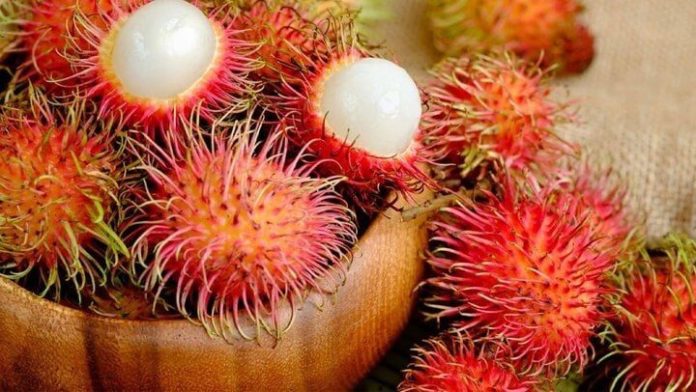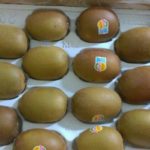Examining the Outer Shell

The color of the rambutan is the first important factor. Ripe rambutan typically boasts bright and uniform colors. Depending on the variety, you may encounter different shades such as red, yellow, or orange. For instance, the Nhãn rambutan variety will have a bright yellow shell, deepening to a darker yellow when ripe. Nhãn rambutan tends to have thicker, sweeter flesh. On the other hand, Java rambutan sports a vivid red or deep crimson shell. Rambutan with vibrant colors is usually an indication of ripeness and tastiness. Avoid choosing fruits with uneven coloring, dark spots, or cracks, as these could be signs of spoilage or a lack of freshness.
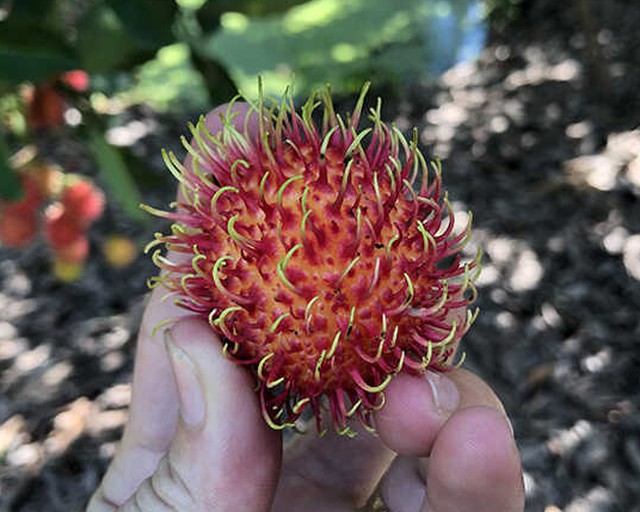
If you notice that the rambutan’s shell is softening or darkening, the spines are wilting or turning black, or they are no longer protruding, it’s best to avoid these fruits as they may have been stored for too long and could have tough, unappetizing flesh. Also, refrain from choosing red rambutan that isn’t round, as these tend to be empty inside. Fresh rambutan usually has soft, slightly curved spines. Steer clear of fruits with hard, dry, and extensively shed spines, as these indicate that the fruit is past its prime.
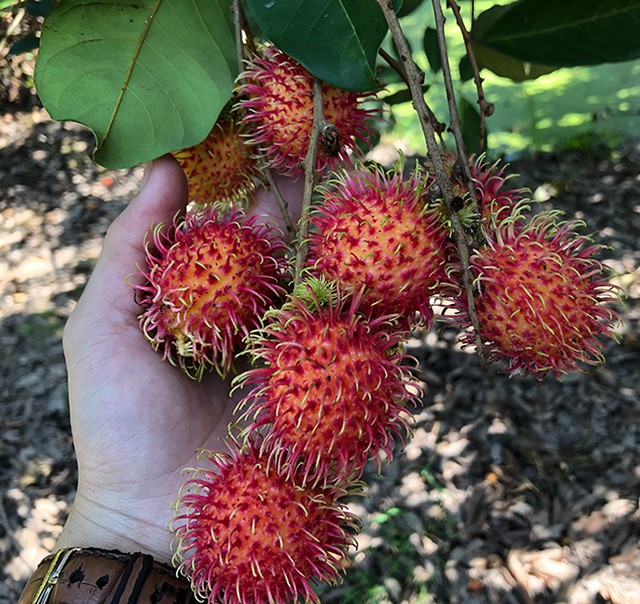
Freshly picked rambutan will have green leaves in the bunch, and the unripe fruits will also be green. Choosing this type ensures freshness and flavor. If the leaves appear wilted, dry, or black, and the unripe fruits in the bunch are also dry and dark, the rambutan is likely old and past its prime.
Inspecting the Flesh

Thick flesh is a hallmark of delicious rambutan. When peeled, the flesh should be plump and juicy. Notably, the flesh of tasty rambutan usually doesn’t cling excessively to the seed and can be easily separated. Gently pressing the fruit is a clever way to check for thick, peelable flesh. If the flesh feels firm and bounces back, it’s a good sign. To be sure that the rambutan has flesh that peels away easily, try peeling one at the point of sale and inspect it before buying in bulk.

Delicious rambutan flesh is opaque white, appears juicy, and emits a distinctive aroma. If the flesh is yellowish, oozes liquid when peeled, or smells odd, the rambutan is likely overripe, spoiled, or past its prime, and won’t provide the desired crispness and ease of peeling.
Scrutinizing the Shell
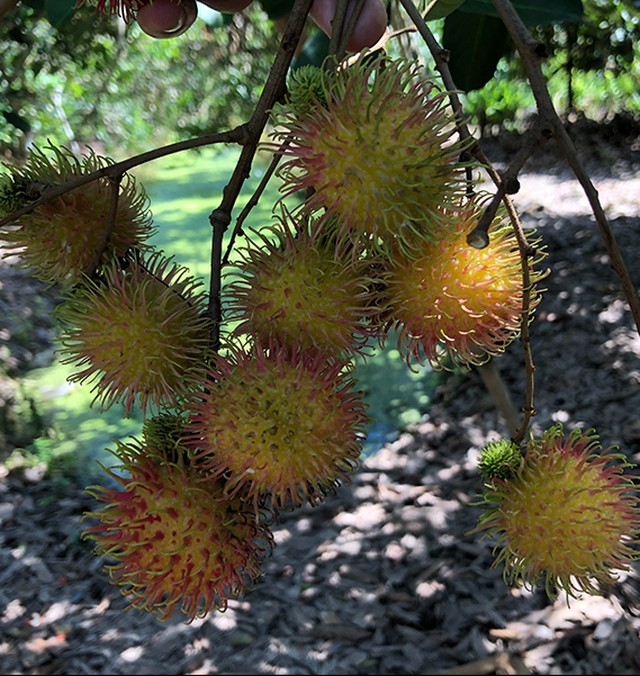
When examining the shell, avoid fruits with a yellow hue. Yellow rambutan is just ripening and won’t be as sweet, often carrying a sour taste.
Testing for Ripeness and Freshness
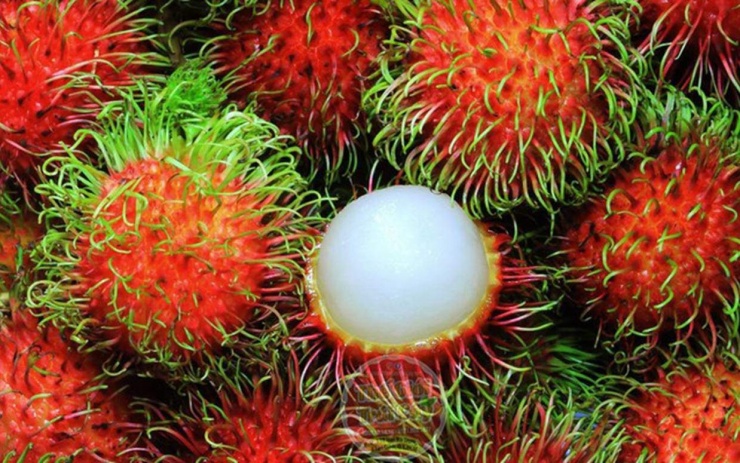
When holding a rambutan, it should feel solid and heavy. Lightweight and soft fruits are likely overripe or wilted. You can also gently press the shell to test for ripeness. If the fruit is firm and bounces back, it’s a sign of freshness. Fresh rambutan emits a delightful, characteristic fragrance. If the fruit lacks a scent or has an odd smell, it’s best to avoid it. A truly fresh and tasty rambutan will beckon you with its sweet, enticing aroma, making you want to devour it immediately.
Tips for Enhancing the Taste of Rambutan After Purchase
Once you’ve selected your desired rambutan, it’s advisable to refrigerate them for a few hours to enhance their flavor and make them more refreshing. When consuming rambutan, refrain from eating the shell and seed.
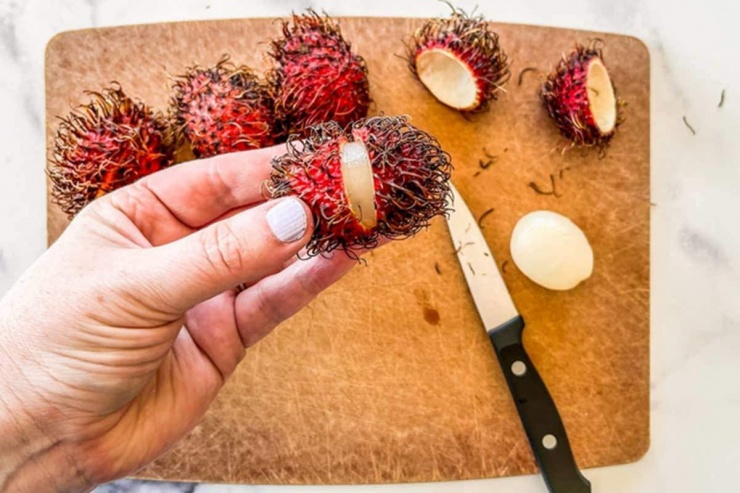
The simplest way to separate the shell and seed from the flesh is to: – Use a knife to cut the shell in half horizontally, then peel off one half, using the other half as a base. Alternatively, you can peel the entire shell and place the fruit in a clean container.
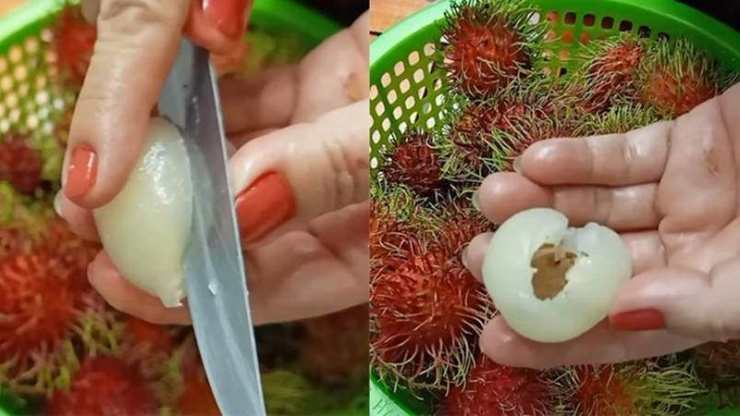
– To remove the seed, carefully slice the flesh lengthwise with a knife and gently extract the seed. Be gentle to avoid damaging the flesh.
Selecting Yummy Kiwis: A Guide
Do you want to pick a delicious kiwi but don’t know where to start? Look no further – this article will provide you with all the information you need to choose a delicious kiwi! Packed with minerals, vitamins, and antioxidant properties, kiwi is a great addition to your diet and may even treat a variety of ailments. Let’s find out how to select the best kiwi for you!
Explore the Variety of Rambutan: Health Benefits and Preparation Tips
Have you ever wondered about the health benefits of including rambutan in your diet? Do you know what types of vitamins and minerals are present in this exotic fruit? Are you curious about various ways to prepare rambutan? If so, then read on to discover everything you need to know about rambutan and its various benefits for your health.

























